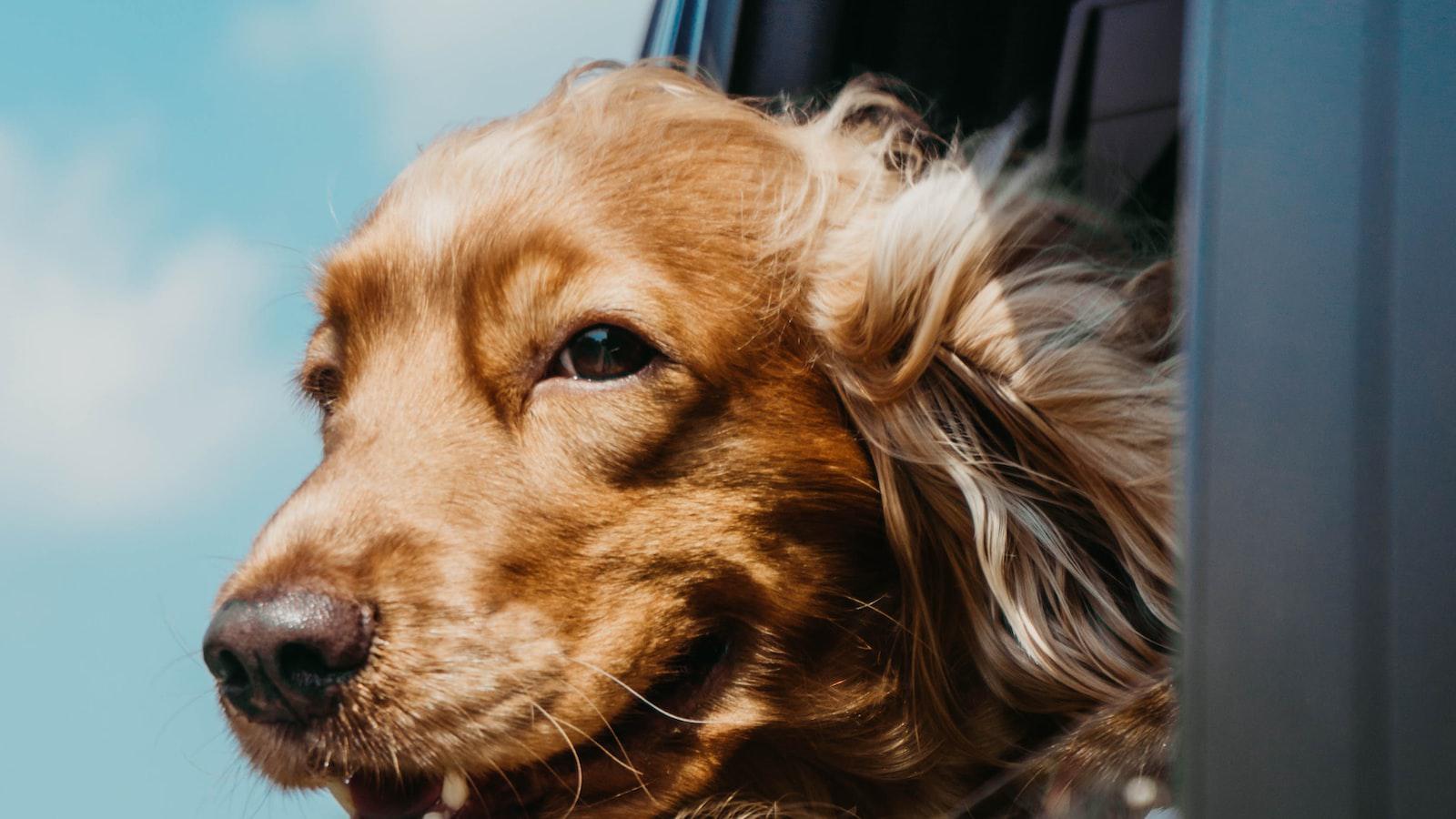Have you ever come home after a long day at work, only to discover a yellow puddle on your pristine white carpet?
Or maybe you’ve woken up to the distinct smell of urine wafting through your home, and your furry friend has a guilty look on their face.
We’ve all been there, and it’s frustrating to say the least.
But why do dogs choose to relieve themselves inside the house, when they have the great outdoors at their disposal?
This article will explain why our beloved pups sometimes cannot resist marking their territory where they shouldn’t.
Understanding Why Does Your Dog Pee in your House?
Having a dog that pees in the house can be frustrating and confusing.
You might find yourself asking, “Why on earth is my furry friend doing this?”
Well, don’t worry, you’re not alone!
There are actually several reasons why dogs may exhibit this behavior:
1. Marking Their Territory
One primary reason dogs mark their indoor space with urine is to establish their dominance.
In the wild, wolves, the ancestors of our domestic dogs, use urine marking as a way to claim their territory.
This instinctive behavior remains ingrained in our pet dogs, with males being particularly prone to mark their territory to show their place in the pack.
However, even female dogs may engage in this behavior, especially if they are unspayed or in heat.
Another reason behind indoor marking can be territorial insecurity.
Dogs who feel anxious or stressed may resort to urinating in the house to create a perceived safe space.
This is especially true if there have been changes in the household, such as the introduction of a new pet or a family member moving away.
In these cases, the dog may feel the need to reinforce their presence and security by marking their territory with urine.
2. Submissive or Anxious Behavior
Dogs may pee in the house as a result of anxiety or submission.
If your dog feels threatened or scared, they may urinate as a way to appease or communicate their submission to you or other animals.
This can usually be observed in combination with submissive body language, such as crouching, lowered ears, and avoiding eye contact.
3. Seperation Anxiety
Separation anxiety can be triggered by a variety of factors, such as a change in routine, a new environment, or even the loss of a loved one.
When dogs experience intense stress, whether it’s from being apart from their owners or feeling uncertain in their surroundings, their body goes into survival mode.
This heightened state often leads to an increased need to relieve themselves, resulting in accidents inside the house.
To understand why stress can cause dogs to pee indoors, it’s important to realize that elimination is a natural way for them to release tension.
Just like humans might feel the need to use the restroom when they’re nervous, dogs have a similar response when faced with anxiety.
So, when stress overwhelms them, their bladder may become more active, leading to involuntary urination that isn’t intentional or malicious.
Identifying Health Issues that Cause Dogs to Pee in the House
Dogs are wonderful companions, but it can be frustrating when they constantly pee inside the house.
If your furry friend is experiencing this issue, it’s important to understand that it might not be entirely their fault.
Sometimes, a medical concern can be the underlying cause.
Identifying and addressing these health issues can help you and your four-legged friend live a more pee-free life.
One common medical concern that could cause a dog to pee inside the house is a urinary tract infection (UTI).
UTIs in dogs are often caused by bacteria entering the urinary system.
This can lead to frequent urination, accidents in the house, and even blood in the urine.
If you notice these symptoms, it’s crucial to take your pup to the vet for an examination.
They can prescribe antibiotics to treat the infection and relieve your dog’s discomfort.
Another medical issue that could contribute to your dog’s indoor accidents is bladder stones.
These are hard mineral formations that can develop in your dog’s bladder, causing pain and irritation.
A dog with bladder stones may exhibit similar symptoms as a dog with a UTI, such as increased frequency of urination and peeing in the house.
In severe cases, your dog may even strain to urinate or have difficulty emptying their bladder.
It’s important to consult your vet if you suspect bladder stones, as they may require surgical removal or dietary changes to dissolve them.
Lastly, hormonal imbalances can also lead to inappropriate urination.
An example of this is canine diabetes.
When a dog’s body does not produce enough insulin, their blood sugar levels can become too high, resulting in increased thirst and, subsequently, more frequent urination.
If your dog is showing signs of excessive drinking, frequent urination, weight loss, and increased appetite, diabetes may be the cause.
Your vet can perform tests to confirm the diagnosis and help you manage your dog’s condition through diet, medication, or insulin injections.
Remember, identifying the underlying health issues causing your dog to pee in the house is just the first step.
Regular vet check-ups, a healthy diet, and plenty of outdoor potty breaks are essential in maintaining your dog’s overall well-being.
With the right care and attention, you can address any medical concerns and help your furry friend become a happy and accident-free member of your household.
Insights into Older Dogs’ Inability to Control their Bladder
Peeing behavior can also be attributed to a condition called age-related incontinence, which affects many older dogs.
1. Understanding Age-related Incontinence
As dogs age, just like humans, their bodies undergo various changes.
One of the most common bladder-related changes is a weakening of the urinary sphincter muscles.
These muscles play a crucial role in keeping the bladder closed, preventing any leakage.
However, with age, they may become less efficient, leading to involuntary urine leakage or the inability to control the bladder completely.
2. Signs to Look Out For
If your dog is suffering from age-related incontinence, you may notice a few telltale signs.
These include frequent accidents inside the house, damp or stained bedding, or increased licking around the genital area.
It’s important not to punish your furry friend for these accidents, as they have no control over their bladder in such cases.
Instead, opt for a more compassionate approach, understanding that they are experiencing a genuine medical issue that requires attention.
3. Treatment Options
The good news is that age-related incontinence can often be managed effectively, improving both your dog’s comfort and your peace of mind.
Some potential treatment options include medication to strengthen the urinary sphincter muscles, hormone replacement therapy, and changes in diet.
Consulting with your veterinarian is crucial to determine the best course of action for your aged companion, as they can assess the severity of the condition and provide tailored recommendations.
Remember, dogs experiencing age-related incontinence deserve our understanding and care.
By being attentive to their needs and seeking appropriate treatment, you can help them maintain their quality of life and minimize the mess inside your home.
Stay patient and supportive while working with your veterinarian, ensuring your loyal companion can enjoy their golden years to the fullest.
Prevent Indoor Accidents, Promote Outdoor Elimination Effectively
Dogs peeing in the house can be a frustrating issue for dog owners to tackle.
It’s important to understand that this behavior is usually a result of either a lack of proper training or a physical problem.
Thankfully, there are effective strategies you can implement to prevent indoor accidents and encourage outdoor elimination.
First and foremost, consistency is key when it comes to training your dog.
Establish a regular routine by taking your dog outside at specific times throughout the day.
Be sure to praise and reward them immediately after they finish eliminating outdoors.
This positive reinforcement will help them associate going outside with a positive experience.
Additionally, consider using verbal cues, such as “go potty” or “do your business,” to help your dog understand what is expected of them.
Secondly, consider crate training your dog.
Dogs have a natural instinct to keep their den clean, so a properly sized crate can be a useful tool in preventing indoor accidents.
Make sure the crate is large enough for your dog to stand up, turn around, and lay down comfortably.
Gradually introduce your dog to the crate, using treats and positive reinforcement to create a positive association.
When you can’t directly supervise your dog, confining them to the crate can prevent accidents and give them a designated space of their own.
Finally, be proactive in addressing any physical issues that may be contributing to the problem.
Sometimes, dogs may experience urinary tract infections or other health problems that cause them to have accidents indoors.
If you notice any unusual behavior or frequent accidents, consult with your veterinarian to rule out any underlying medical conditions.
By addressing these concerns, you can help your dog stay healthy and prevent indoor accidents.
Remember, patience and consistency are key when training your dog to eliminate outdoors.
With a combination of positive reinforcement, crate training, and effective communication, you can address the issue of indoor accidents and encourage your dog to do their business outside where it belongs.
So, invest the time and effort into training your furry friend, and soon enough, you’ll have a well-trained and accident-free doggo!
FAQ
Q: Why would a dog who’s house-trained suddenly start relieving themselves indoors?
A: Several factors can contribute to this unwanted behavior.
One common reason is a lack of proper training. If a pup hasn’t been taught how and where to go potty, accidents are bound to happen.
Consistency and positive reinforcement are key when it comes to housebreaking dogs.
Q: But what if my dog has been well-trained and still has accidents?
A: There could be a few possibilities at play.
Perhaps your furry companion is feeling anxious or stressed.
Just like humans, dogs can experience emotions that may affect their bathroom habits.
Changes in the household, new visitors, or unfamiliar environments can all trigger this behavior.
Keep an eye out for signs of stress in your pup and try to address the root cause.
Q: Could health problems be causing my dog to pee inside?
A: Absolutely!
Medical issues might underlie your dog’s inappropriate urination.
Urinary tract infections, bladder stones, or even diabetes can make it difficult for dogs to control their urine.
If you notice any unusual patterns or changes in your pet’s potty behavior, it’s vital to consult your veterinarian.
They can run tests and provide appropriate treatment if necessary.
Q: My dog seems to pee in the house when left alone. Why is that?
A: Dogs are social creatures, and some may become anxious when separated from their favorite humans.
Dogs with separation anxiety often exhibit unwanted behaviors like chewing, barking excessively, and yes, peeing indoors.
Seek guidance from a professional dog trainer or behaviorist to help your furry pal overcome this fear and regain their confidence when left alone.
Q: Is there anything I can do now to prevent accidents in the house?
A: Absolutely! Here are a few tips to help you minimize the risk of indoor accidents:
- Maintain a consistent schedule for feeding and potty breaks.
- Be patient and reinforce positive behavior with rewards.
- Supervise your dog, especially during the house-training phase.
- Keep an eye out for signs of discomfort, stress, or changes in behavior.
- Take your pup outdoors regularly, ensuring they have ample opportunities to relieve themselves.
- Consider crate training, as dogs often view crates as their safe spaces and are less likely to eliminate inside them.
- Clean up accidents with an enzymatic cleaner to eliminate any residual scents that might attract your dog back to the same spot.
Remember, accidents happen, but with dedication, understanding, and a little training, you and your furry friend can conquer any potty problems together!
Wrapping Up
Whether it’s due to a medical issue, anxiety, or simply a lack of proper training, our dogs can find themselves struggling to hold it in until they make it outside.
But fear not!
Armed with knowledge and a little understanding, we can work together to address this issue and find solutions that suit both our pets and us.
Remember, patience is key as we navigate through the ups and downs of potty training.
With a bit of consistency, positive reinforcement, and some handy tips and tricks we’ve shared, we can help our furry companions become obedient and house-trained.
And let’s not forget the importance of seeking professional help when needed.
Veterinarians and dog trainers are always just a phone call away, ready to guide us through any challenges we might face.
They possess the expertise to identify and address any underlying medical or behavioral issues that may be contributing to our dog’s indoor accidents.
So, next time you stumble upon a puddle on your favorite carpet or discover a little surprise in an unexpected spot, take a deep breath and remember that dogs, just like us, have their flaws and moments of imperfection.
Let’s shower them with love and understanding, forming an unbreakable bond that can weather these minor setbacks.














